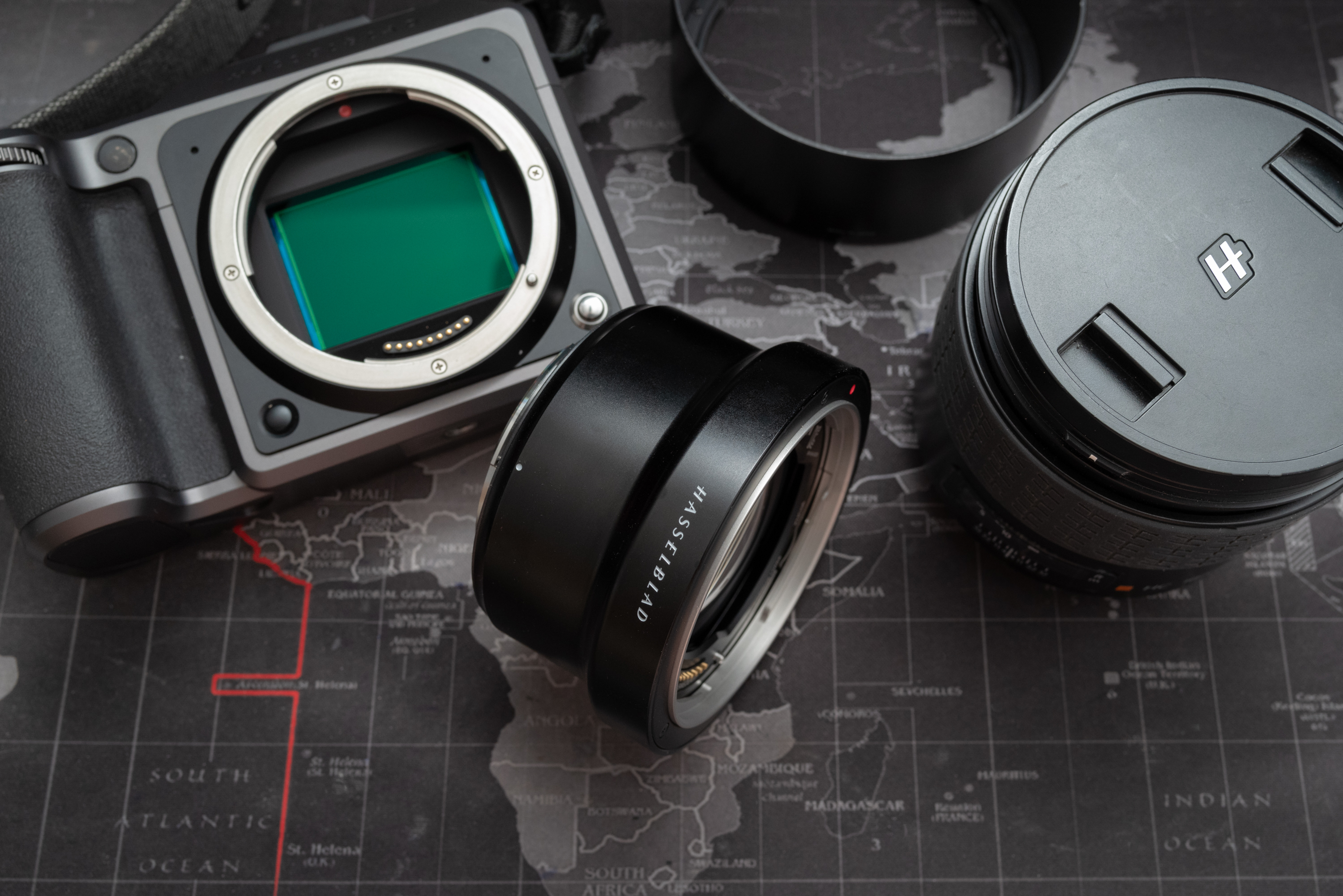The Hasselblad XH Converter is a nice idea, but it introduces some problems that many won’t want to deal with.
Over the years, Hasselblad has produced a nice collection of H mount lenses for their Medium Format cameras. However, with the introduction of the X1D, the X1D II, and the 907X, Hasselblad also introduced a new mount. Seasoned Hasselblad users who built up a solid H mount lens library might be put off the new cameras because of this. This is where the Hasselblad XH Converter 0.8 comes in. This focal reducer will adapt H mount lenses to Hasselblad X system cameras. The focal reducer will roughly give you the same field of view and aperture performance of H System (645 Medium Format) cameras. As a bonus, you’ll keep autofocus functionality. It sounds great in theory, but how does it perform in the real world? Find out in our full review.
Table of Contents
Pros and Cons
Pros
- Allows you to use H mount lenses on Hasselblad X Series cameras
- Increases your field of view and maximum aperture
- Weather sealing
- Solid all metal build
Cons
- Makes an already slow-focusing camera slower
- Dramatically increases the amount of CA and fringing in images
- Big, bulky, and adds significant weight to your camera
- Not all HC lenses are supported as they can’t be updated to the latest firmware
- Images are a little soft when lenses are shot at their widest aperture
- Pricey at $949
Gear Used
We used the Hasselblad XH Converter 0.8 with the Hasselblad X1D II 50c and the Hasselblad HC 100mm f2.2.
Technical Specifications
All tech specs have been taken from the official Hasselblad website:
- Focal length conversion factor: 0,79x
- Aperture conversion factor: +2/3 Stop
- Close range: Same as for the lens
- Length/diameter: 51,5 / 84,6 mm
- Weight: 430 g/ 0.94lbs
- Product number: CP.HB.00000627.01
- Design: 5 elements in 3 groups
Innovations
There are no real innovations to speak of here. Focal reducers have been around for quite some time, and they haven’t changed over the years. This is just another adapter with no real stand-out features other than it being for Hasselblad cameras and lenses.
“There’s not really much that can be done with a converter when it comes to ergonomics. Still, Hasselblad has done a nice job here.”
Brett Day – Gear Editor
Hasselblad XH Converter 0.8 – Ergonomics
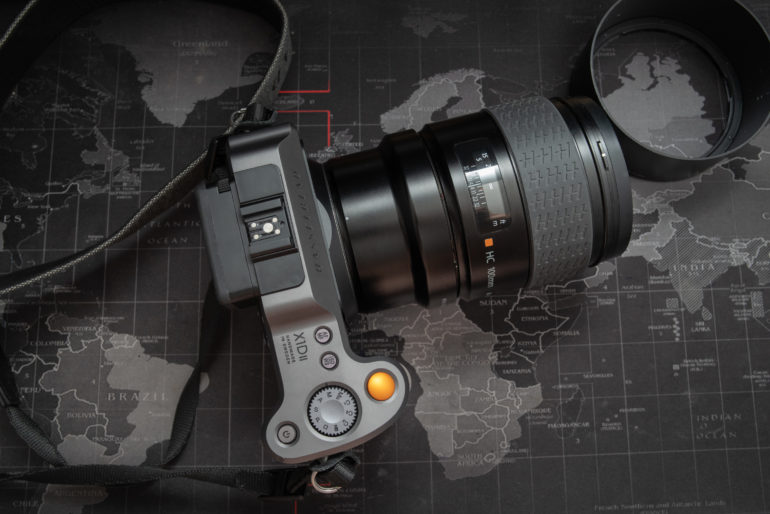
From an ergonomics standpoint, the Hasselblad XH Converter 0.8 pretty standard for an adapter. The first thing you’re going to notice, though, is just how big the unit is. It’s the size of some primes on other systems. This adapter will add a significant chunk of metal to the front of your camera. Weighing in at just under a 1lb, you’re going to feel it. In fact, with the weight of the camera (1.69lbs), the lens (1.7lbs), and the adapter (0.94lbs), the total rig we used weighed 4.33lbs! Just keep this in mind if you have weak wrists.
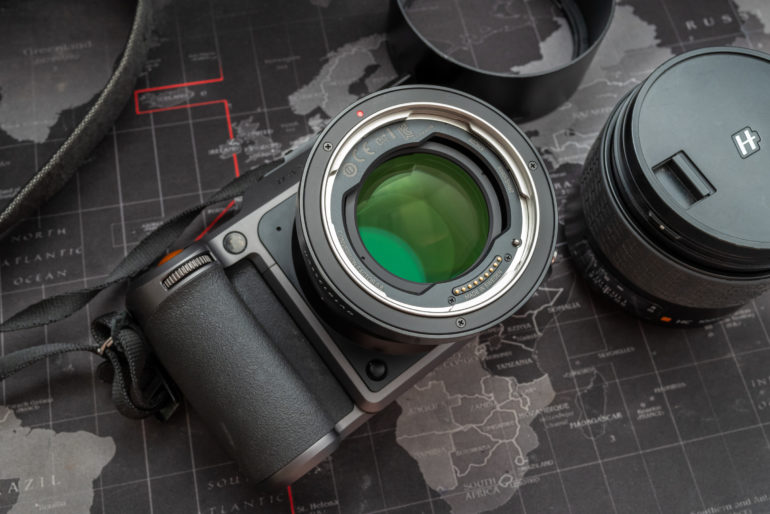
This is what the Hasselblad XH Converter 0.8 looks like from the front with no lens attached. You can see the elements on the inside. Here you can also see the electronic contacts and the H mount.

As you can see, there are no external controls on the adapter apart from the lens release. The body of the converter is completely smooth, which makes it a little slippery. I like how Hasselblad went with a minimalist design here, though. All you’ll see on the body is some Hasselblad branding and the name of the converter. The extra metal jutting out the front of the camera also gives you a nice place to rest your hand. There’s not much that can be done with a converter when it comes to ergonomics. Still, Hasselblad has done a nice job here.
“This is a solid chunk of metal and glass that’s built to the standards you’d expect of Hasselblad.”
Brett Day – Gear Editor
Hasselblad XH Converter 0.8 – Build Quality
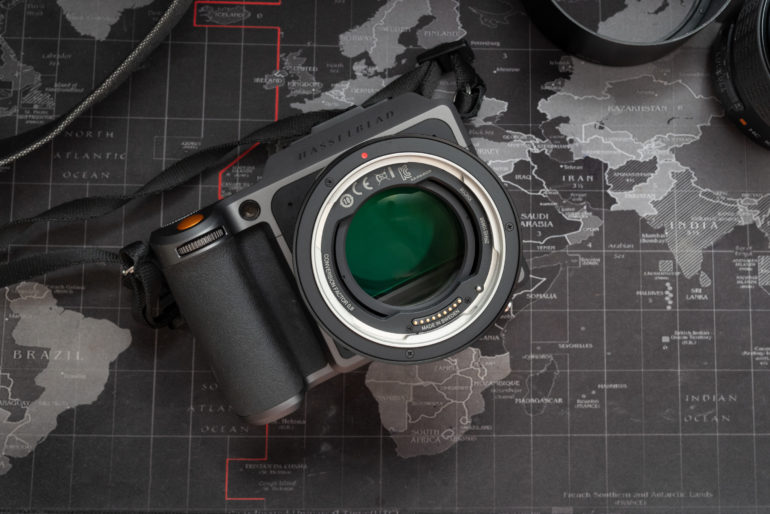
Solid! That’s how I would describe the build quality of the Hasselblad XH Converter 0.8. I recently said that David could put it in a sling and take down Goliath with it. That still rings true. This is a substantial chunk of metal and glass built to the standards you’d expect of Hasselblad. It’s not going to break in a hurry. The converter also has a gasket at the rear, which indicates it has weather sealing. I had the X1D II with the converter out in a drizzle, and I encountered no problems. However, I didn’t spend much time in the drizzle as the lens I had paired with the converter is not weather sealed. If you pair it up with a weather-sealed lens, you’ll be able to use it without issue. Quality-wise, the build of the Hasselblad XH Converter 0.8 is as tough as they come.
“Really, though, the only thing you might have to get used to is how the camera balances. The extra 1lb of weight can make the camera a little front heavy.”
Brett Day – Gear Editor
Hasselblad XH Converter 0.8 – Ease of Use

The Hasselblad XH Converter 0.8 is straightforward and easy to use. You will need to make sure that your camera is running the latest firmware. You’ll also have to make sure that your HC lenses are also updated and ready to go. Note that not all H mount lenses will work with this adapter: some cannot be updated to the required firmware. Once you have the firmware updated, attach the converter to your camera. Then attach your lens. If your lens has autofocus, it’ll be able to do just that. The aperture settings are also controlled through the camera body. Remember that there are no controls on the converter itself. Once updated and attached, you use your camera the same way you always have.
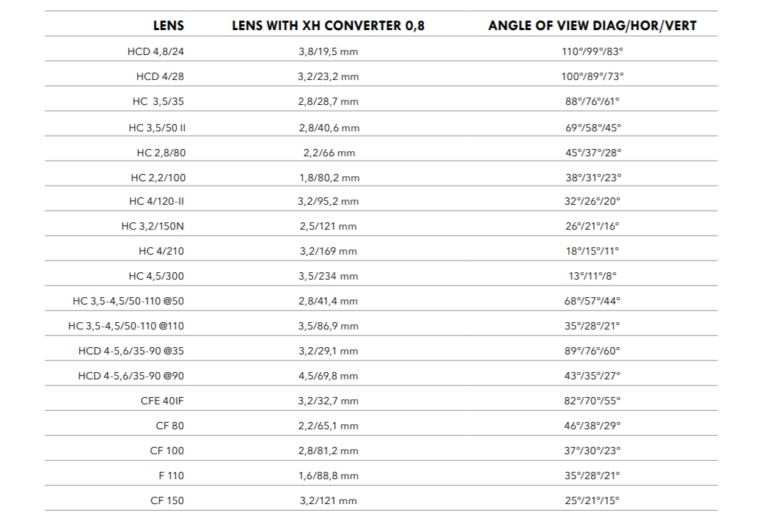
Once you get to terms with how to figure out conversion rates for focal lengths and apertures, you’ll be fine. Hasselblad provides a handy chart that is good to keep around. As you can see above, the HC 100mm f2.2 lens we were using effectively became an 80mm f1.8 lens with the converter. Really, the only thing you might have to get used to is how the camera balances. The extra 1lb of weight can make the camera a little front heavy.
“If you plan on capturing any action faster than, say, a snail crawling along a sidewalk, you’re going to have issues.”
Brett Day – Gear Editor
Hasselblad XH Converter 0.8 – Autofocus

Sigh. Okay, this is where things start getting a little rough in this review. If you read my review of the Hasselblad X1D II, you’d know that the camera suffers from autofocus issues mainly because it employs a contrast-detect only focusing system. During my review of that camera, focusing was slow and often inaccurate. Unfortunately, the Hasselblad XH Converter 0.8 compounds this issue. The HC 100mm f2.2 lens we used uses relatively slow and loud focusing motors. Pair it up with a slow focusing camera through an adapter, and, well, you can guess what happened.
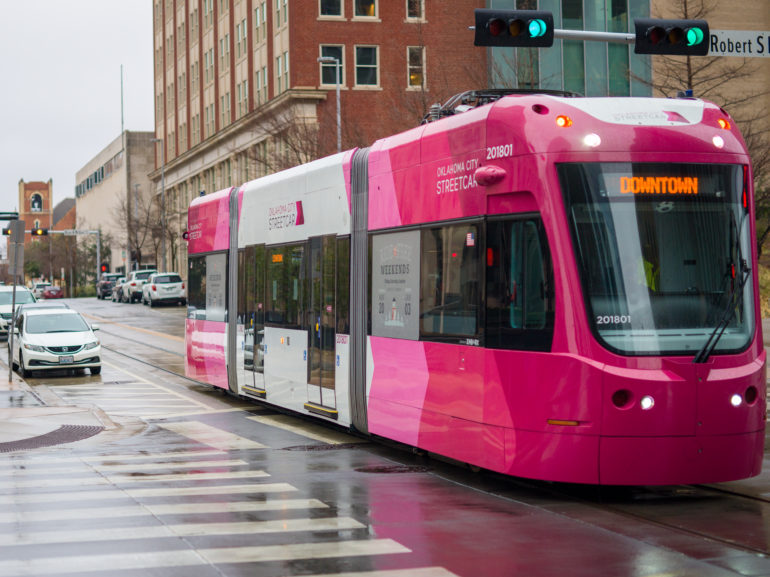
To say I was left frustrated would be an understatement. Now, on stationary or slow-moving subjects, this combo is okay. If you plan on capturing any action faster than, say, a snail crawling along a sidewalk, you’re going to have issues. Was I able to capture moving subjects? Yes, but only after planning and waiting. You simply cannot point, focus, and shoot as quickly as you can with other modern cameras. In the shot above of the tram, I started the autofocus process while the tram was stopped at the stoplight seen in the background. The camera, converter, and lens combo finally focused when the tram started exiting the scene. The whole time the lens was hunting: moving back and forth loudly while it tried to figure out what was going on. I could have manually focused faster.

This, unfortunately, was not an isolated incident. There were focusing issues in good light with plenty of contrast. By issues, I don’t only mean slow-focusing times. I also mean false positives. The camera would indicate that focus was obtained by turning the focus point green. However, it was clear that the subject was not in focus. In overcast situations…sigh. I waited for close to eight seconds for the camera to focus in the above image. If your shooting style doesn’t require blazing fast autofocus, you’ll be okay here. If you like to run and gun, you’ll easily become frustrated with this setup.
“Hasselblad lenses tend to have more issues with chromatic aberration and fringing than others. Unfortunately, the Hasselblad XH Converter 0.8 takes those CA issues and makes them worse.”
Brett Day – Gear Editor
Hasselblad XH Converter 0.8 – Image Quality

When it comes to image quality, I’m afraid it’s a mixed bag. Look, images from the X1D II, when all of the stars align, are simply gorgeous. There are no issues with images from this Medium Format sensor. However, we do run into problems with image quality because of the lenses and combined converter. Hasselblad lenses tend to have more issues with chromatic aberration and fringing than others. Unfortunately, the Hasselblad XH Converter 0.8 takes those CA issues and makes them worse. Can you create nice images with this converter and HC lenses? Yes, of course. Still, there are some things you need to know.
Bokeh

As you would expect, the bokeh produced when you use this converter on already fast lenses is gorgeous. We used the HC 100mm f2.2 lens. When combined with the converter, it effectively becomes an 80mm f1.8. An f1.8 lens paired up with a Medium Format sensor. Wow! This combo renders stunning bokeh. If you’re a portrait photographer, have HC lenses, and want to move to new Hasselblad X cameras. Well, you’ll love what you can do here. Bokeh is smooth, creamy, dreamy, and then some. I could look at it for hours. Of course, the bokeh levels you’ll get will be determined more by the aperture of the lens you’re using. Still, the converter will have a pleasing effect on bokeh.
Sharpness

Focal reducers can actually increase the overall sharpness of an adapted lens. It’s hard for me to say whether or not that’s the case here. Why? Well, because I do not have a Hasselblad H mount camera here to create comparison shots. So, I’ll tell you what I experienced while using the HC 100mm f2.2 on the converter. Wide-open at the extended aperture of f1.8, the lens was, unfortunately, a little soft. However, when stopped down to f2.4, the lens was ridiculously sharp through to f13. Again, your mileage will vary based on what lens you use with this adapter.
Lens Character

In this section, we’ll look at color rendering, vignetting, chromatic aberrations, and fringing. Let’s start with the color rendering. Colors are not affected much, if any, by this adapter. Therefore, the colors in the images you capture will be splendid. This is down to the way Hasselblad’s image processors handle the files and the lenses themselves. I’ve never used a Hasselblad lens that disappointed me when it came to colors. So, have no fears here; the Hasselblad XH Converter 0.8 will not have any negative effect on color rendition. Colors, especially skin tones, will amaze you.
Now, the converter will have an effect on the amount of chromatic aberration in your images. Unfortunately, it negatively affects images. As mentioned above, Hasselblad lenses tend to dial up a lot of CA (purple and green fringing). The Hasselblad XH Converter 0.8 exacerbates that problem to the point where some images are unusable. And no, post processing software cannot always fix it.

Above is a crop of an image I took during this review period. Look at the amount of purple fringing around the tree branches. It’s off the charts. Yes, this is after applying lens corrections during post as well. It’s so bad that even when you look at the whole image this crop came from, you can easily see it. It’s shot-ruining.

Here’s another crop of an image. You can see both purple and green fringing here. Green fringing is evident around the roof of the building and the floodlight in the back. Purple fringing can be seen around the entire statue and in the hair. This isn’t acceptable from an adapter that costs $949, a camera that costs $5,750, and a lens that costs $4,299. I would expect this from an old Pentax SMC lens from 1970. I definitely would not expect it from a system that costs as much as a small car. If you intend to use this converter with your H mount lenses collection, be ready to deal with this. In terms of vignetting, the Hasselblad XH Converter 0.8 does not introduce any issues.
Hasselblad XH Converter 0.8 – Extra Image Samples







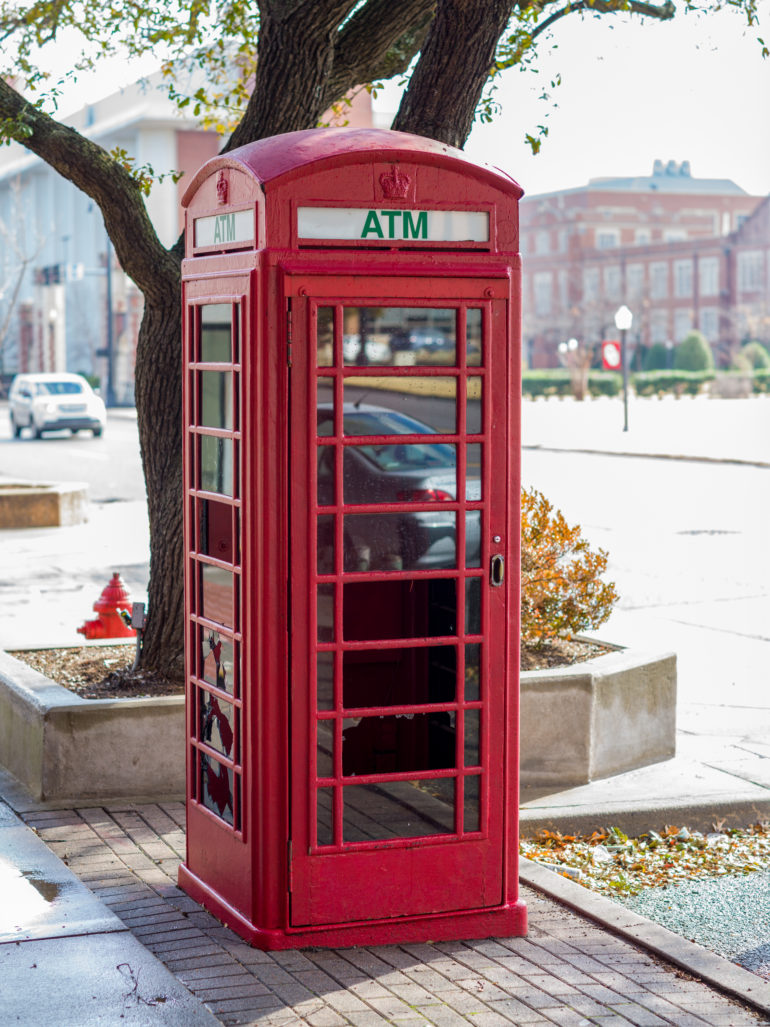
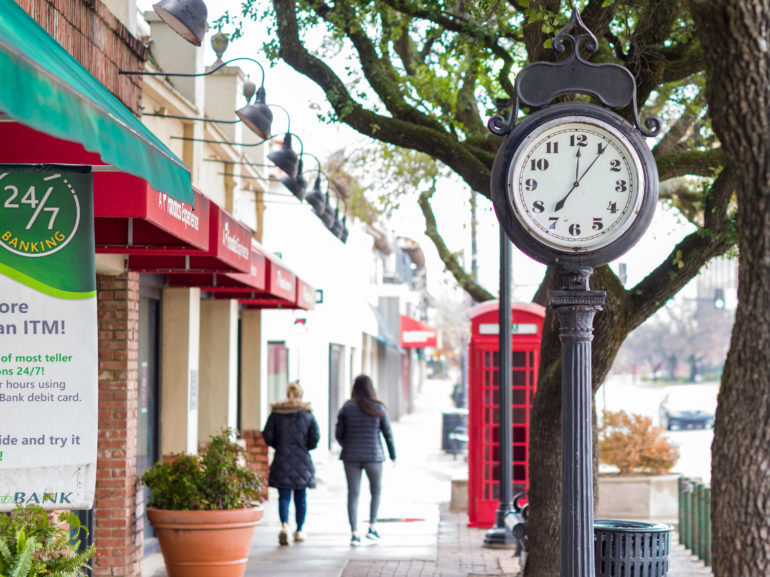
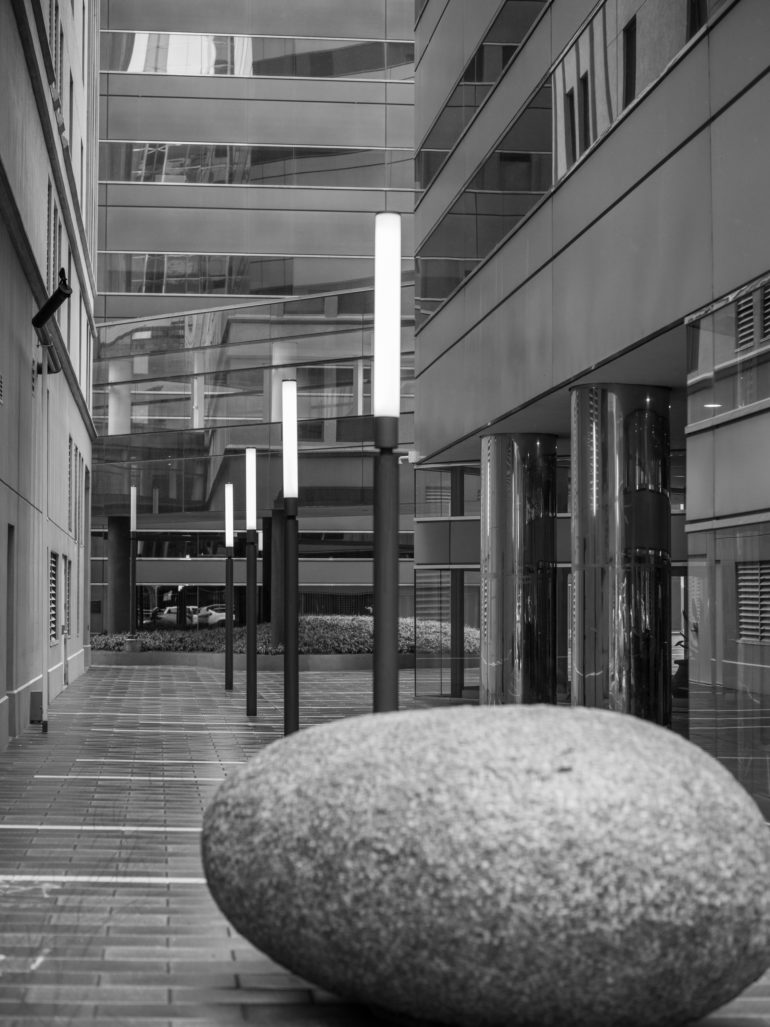



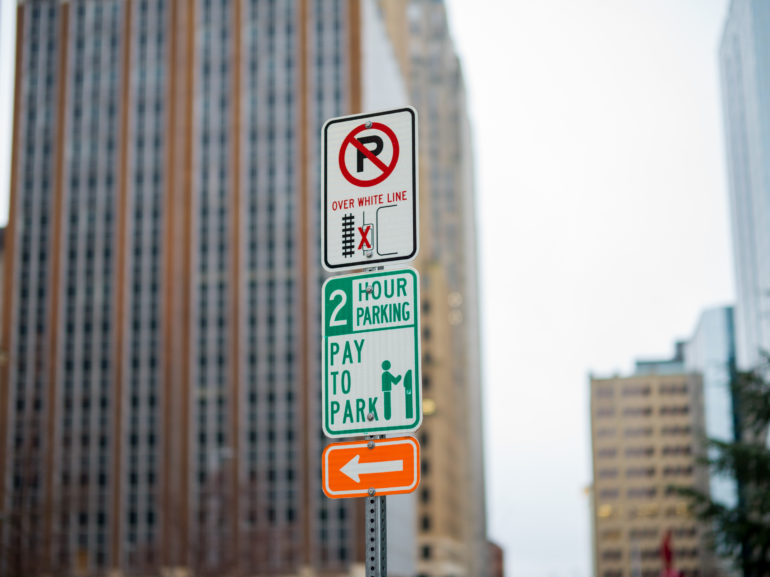
“Still, the XH converter does what it claims to do. It will allow you to use your H lenses on Hasselblad’s new Mirrorless cameras. If that’s all you want, and you don’t mind spending extra time during post dealing with fringing, then you’ll likely be happy.”
Brett Day – Gear Editor
Hasselblad XH Converter 0.8 Conclusions

Likes
- Solid build quality
- Easy to use
- Makes switching to a different mount easier while giving a greater field of view and greater aperture
Dislikes
- It enhances bad lens traits such as fringing and autofocus performance
- Adds a significant amount of weight to your camera
- It’s price
Who is this adapter for? It’s for seasoned Hasselblad users, who, over the years, have built up a collection of H mount lenses. If switching systems and purchasing new lenses terrifies you, this converter is for you. You’ll be able to maintain autofocus. You’ll also get roughly the same field of view and aperture performance that you’d get from a 645 Medium Format sensor. However, it comes at a cost; CA characteristics your H lenses have will be amplified. You’ll also run into some focusing issues when used on the X1D II. We have not tested this converter with the 907X 50c, though. Still, the XH converter does what it claims to do. It will allow you to use your H lenses on Hasselblad’s new Mirrorless cameras. If that’s all you want, and you don’t mind spending extra time during post dealing with fringing, then you’ll likely be happy.

The Hasselblad XH Converter 0.8 receives three out of five stars. The converter certainly solves a problem, and it does do what it claims. Still, the amount of fringing and focusing issues it introduces or amplifies aren’t quite worthy of the $949 price tag. If you still want one, head on over to Adorama to pick one up.


